How restoring mangroves has helped empower women in Sri Lanka, Vietnam and the Philippines
Posted on September 2nd, 2018
Courtesy Scroll.In
Mangroves can shield coastal communities from flooding while creating livelihood opportunities and supporting healthy ecosystems.
A woman plants a mangrove seedling in the mud as her son looks on. The child looks up at her and asks, Mother, why are you hiding the plant in the mud?” The mother says, Son, these fish are coming here because of these plants. That’s why I plant these plants here.” What she describes is one of the mangrove forests’ important functions – they act as a breeding ground for fish, birds, prawns, and crabs, and the productivity of fisheries and biodiversity of coral reef ecosystems depend on them.

Sudeesa helps poor fishing communities with job training and microfinance programmes. It has partnered with the Sri Lankan government and Seacology, a United States-based environmental conservation group that helps island communities in more than 60 countries protect natural habitats. The partners have launched an innovative and historic effort to make Sri Lanka the first nation to fully protect all of its mangroves – the goal is to create a green belt of mangroves around Sri Lanka. To do this, the partners are taking a three-pronged approach that incentivises women to replant and protect mangroves; provides microcredit to improve livelihood options; and trains women to understand the role a healthy ecosystem plays in building resilience.
Restoring and protecting mangroves can shield coastal communities from flooding, while creating livelihood opportunities and supporting healthy ecosystems. Mangrove forests are some of the world’s most threatened ecosystems, but an increasing number of projects and initiatives are now dedicated to changing this trend. There is no blueprint for how to do it, but experiences from different projects point to what is needed to succeed.
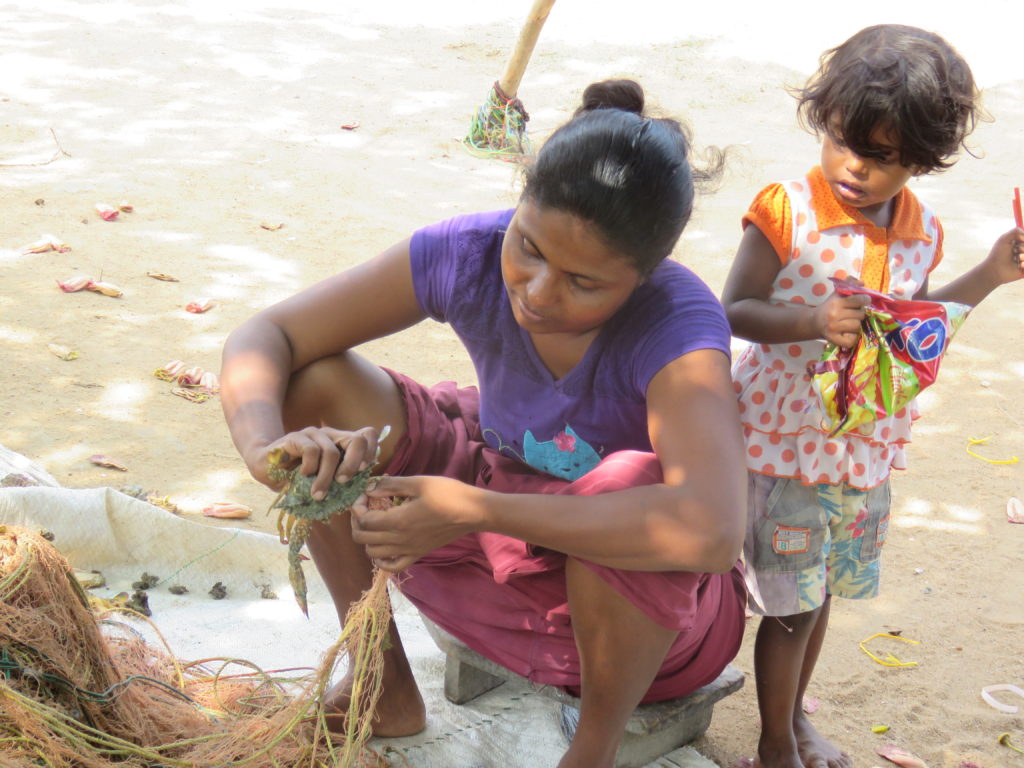
Why mangroves matter
Sri Lanka is an island in the Indian Ocean. Mangrove forests grow in brackish waters, and can be found on the coast around the whole island. They provide both ecological and economic benefits for coastal communities, who use the mangrove forests for shade, fishing, and collecting firewood. They cut mangrove poles for construction or for charcoal production. Mangroves also act as a breeding ground for fish, prawns, and crabs.
On a global scale, mangroves are essential in combating the effects of global climate change. They absorb up to 50 times more carbon than any other type of ecosystem. They also act as a natural buffer against flooding and can reduce the force of storm surges. Dense, healthy mangrove forests can decrease the height of waves by up to 66%.
In the northern part of Sri Lanka, much of the mangrove forest was destroyed during the 1983-2009 civil war, in government efforts to stop the Tamil tigers from hiding in the dense vegetation.
On the west coast of the country, mangroves were destroyed to make way for shrimp farms. These became popular in the 1970s when the government provided subsidies for such farms. Wickramasinghe says, Shrimps were a lucrative business for people in Colombo, but now the destruction is declining because we [Sudeesa] work with the Ministry of Environment [to protect the mangroves].”
But other threats to mangroves continue to loom. There are all kinds of threats to mangroves – everything from the really small scale, cutting them down for charcoal and construction, all the way to [coastal] development [to make way for hotels and resorts],” says Karen Peterson, senior manager of special initiatives at Seacology. This is of greater concern now because Sri Lanka is on the upswing in terms of development as it is becoming a more popular tourist destination.”
Meanwhile, Sri Lanka faces annual monsoons and heavy inland flooding. The impact of these annual floods has increased over recent decades as the country’s population has grown and mangroves have been cleared for increased coastal development. The removal of mangrove ecosystems has had far-reaching economic, social, and environmental impacts, especially for the poor as they are more dependent on these ecosystems for their livelihoods and well-being.
In 2004, Sri Lanka was devastated by the tsunami that was caused by the Indian Ocean earthquake. The communities that were the hardest hit were those that were the most developed and had the least mangrove coverage,” says Peterson. Floods cause more damage worldwide than any other type of natural hazard and cause some of the largest economic, social, and humanitarian losses, accounting for 47% of all weather-related disasters from 1995 to 2015.
Women are disproportionately affected by flooding compared with men, not just in Sri Lanka but globally. They commonly experience more social, cultural, economic, and political disadvantages that can result in higher mortality rates during floods, and higher poverty rates after floods due to more unemployment and the lack of legal rights such as land ownership. Women also face greater psychological stress during and after a disaster because of their caretaker role in the family.
Flooding has often been dealt with through structural measures such as dams, dykes, and reservoirs with concrete seawalls. These expensive, single-focused approaches tend to be driven by top-down governance that does not consult local communities, and they often have negative impacts on the environment, including on fisheries and access to fishing.
To meet this need for new approaches to combat the problem of increasing flooding, Sudeesa and Seacology are working to protect and restore mangroves, and educate communities, school children, and even tourists about the importance of these ecosystems.
The partners are working to create a transformation in how mangroves are seen and managed, by focusing on the importance of healthy, thriving mangrove ecosystems. They also provide a space for inclusive decision-making in the communities. The goal is to help build the capacity of women to protect and restore mangroves. In doing so, the communities are enhancing and promoting the ecosystem functions of mangroves, which provide environmental benefits and contribute to coastal protection, livelihoods, and well-being.
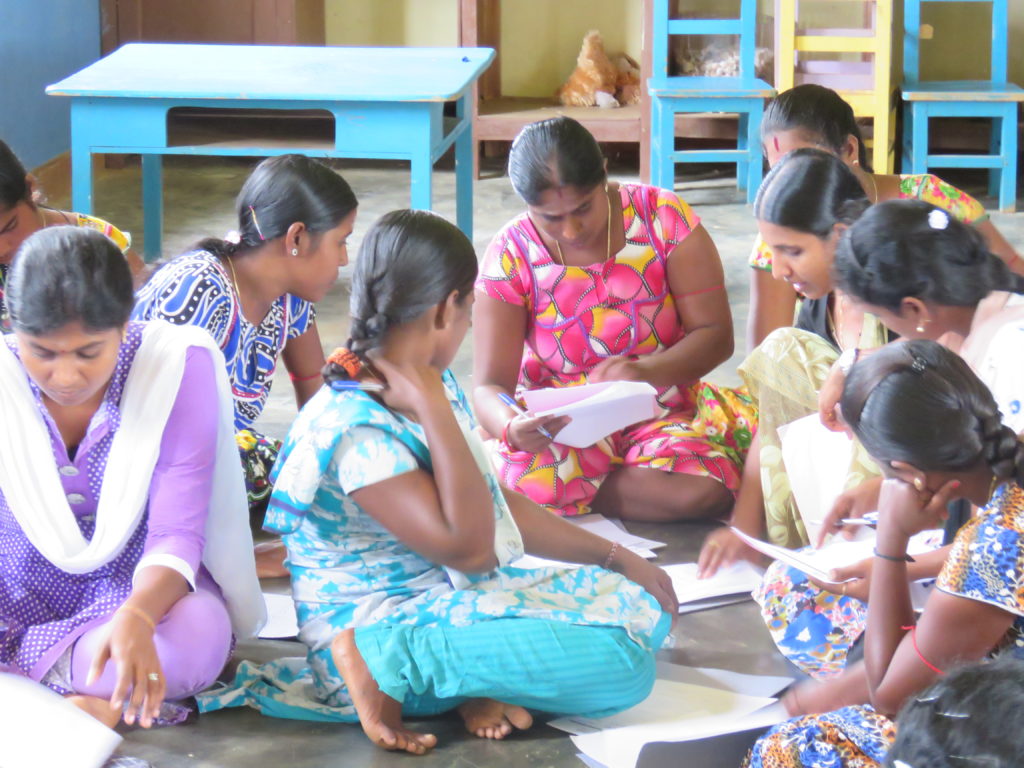
Getting women on board
To replant and protect mangroves, Sudeesa and Seacology engage local women. Conservation projects have a much greater chance of success if you engage women. Also, in the wake of the war there are a lot of widows,” Peterson says.
Through the training, the women join a Community Beneficiary Organisation or form one if one does not already exist. The CBOs have the goal of protecting all the mangroves that surround the villages, and they represent 1,500 villages in 14 coastal districts in Sri Lanka. The mangrove-protecting and replanting activities take place through the CBOs. Women in the CBOs have told Peterson they didn’t really understand the functions of mangroves before the programme, but now they really see their importance.
Before we used to cut down the mangroves for firewood, but not anymore. If anyone tries to cut down the mangroves we will report it to Sudeesa – who will take action,” says Niranjala Fernando, who is a member of one of the CBOs.
So far, more than 7,000 women have been trained and received loans for alternative, sustainable livelihoods. Many but not all of these livelihoods are fishery related: They range from fishing, making and selling dried fish, to having home gardens and livestock. Though the majority are fishery related as many of the communities are fishing communities,” Peterson says.
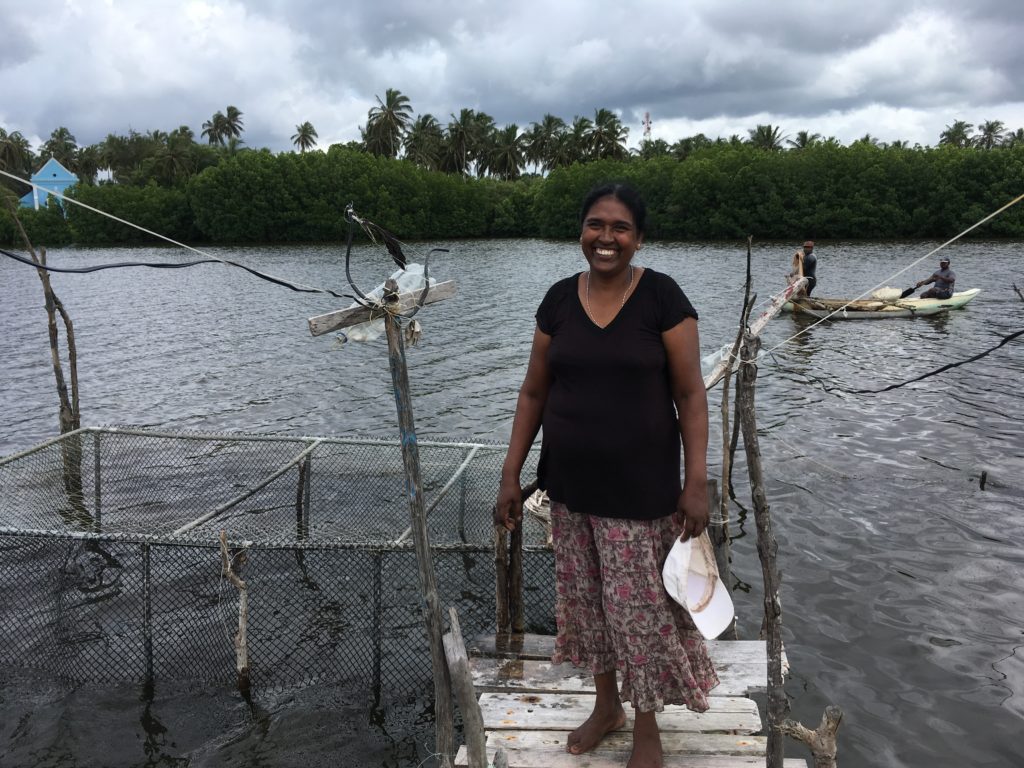
The women are also included in the decision-making processes in the CBOs. In this way the CBOs help the women find their voice in community decisions, especially in areas that were harder hit by the war”, Peterson says. Wickramasinghe agrees. He says that he has noticed a change in that women are more active and forward now, talking to government officers and acting as representatives on environmental committees.
Mangrove regeneration initiatives that involve local communities have been found to be more successful than those that exclude the communities. This is because they take into consideration the communities’ knowledge of which species are appropriate and where they should be planted. Involving local communities also enhances their ownership of the project, making it more sustainable in the long term.
Not just Sri Lanka
Mangrove-replanting initiatives are taking place around the globe. For example, One Architecture, a firm based in New York and Amsterdam, is also turning to nature to build resilience by replanting mangroves to combat flood risk in the Philippines. The project takes place in Tacloban City, an area that was devastated by Typhoon Haiyan, one of the strongest typhoons ever recorded in history – killing over 6,000 people and destroying Tacloban and other parts of the Philippines in 2013.
Flood risk in Tacloban is exacerbated by various gaps in the coastal green belt, and in the wake of Typhoon Haiyan the experiences of people in coastal communities made the local government see the value of mangrove forests. We thought that it was the end of the world for us, because most people live in coastal areas,” says Marito Barillo of Tacloban City government. But there were others who were saved because of mangroves. The many testimonies from these coastal residents convinced us that planting resilient mangrove species along the coastlines can save properties and even lives.”
The One Architecture project started in 2017 and aims to move from plans to action by filling gaps in the green infrastructure, improving coastal protection while incentivising communities to protect and maintain reforested areas. It is a multi-stakeholder initiative, with the community, local and national government, private sector, academics, and non-governmental organisations participating in mangrove and beach forest restoration projects. The main focus and success of the project so far has been identifying blockages in the local governance system that are hampering wider restoration efforts and addressing these to move forward. A key learning experience shared across the partnership has been the importance of a science-based approach to selecting planting methods and species types.
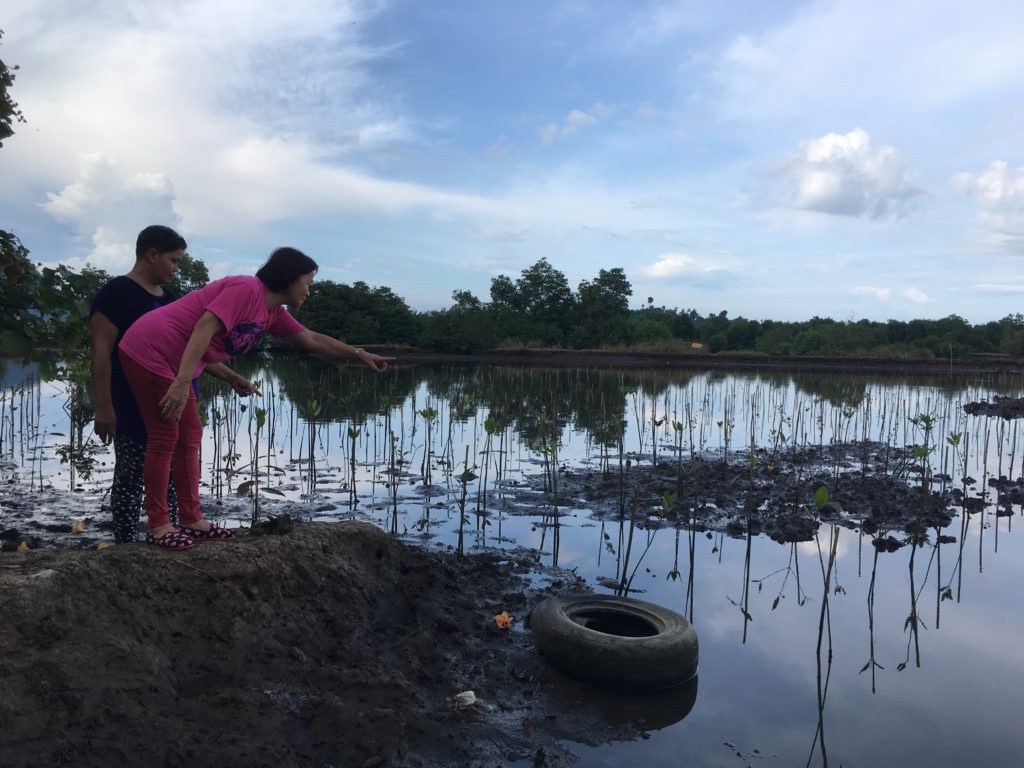
Another example of mangrove replanting is ResilNam, which works to enhance flood resilience in coastal communities in Thua Thien Hue, central Vietnam, by strengthening the role of women in disaster risk management and climate change adaptation. About half a million people live in 32 communes along the lagoon and the coast here. In recent decades, the low-lying coastal areas have been repeatedly affected by severe flooding from the sea, rivers, and heavy rainfall.
Not a one-size-fits-all solution
Mangroves do not fully protect coastal communities from tsunamis and flooding, but they dampen the effects of extreme events and provide many other benefits for coastal communities. And the interest in protecting and restoring these coastal ecosystems has increased in recent years. But not all succeed in their efforts. Wetlands International recently reported that although mangrove planting is hugely popular, many efforts fail to establish sizeable, diverse, functional, and self-sustaining mangrove forests due to weak or no involvement of the community, mono-species planting, and poor choice of location.
In the Philippines, mangrove replanting efforts are extensive, but not necessarily effective or sustainable. If you plant a mangrove in the wrong place it will not survive,” says Arne Jensen at Wetlands International. There is a learning curve here, if you try to adopt or copy nature – planting the right front species – it will survive. But if you manipulate nature and choose the wrong [non-typhoon-resistant] species, then there is almost a 100% guarantee that when you have a strong typhoon like Haiyan, it will die and not recover.”
Finding a sustainable model for funding can also be a challenge. Many projects rely on external funding and would not be able to sustain themselves. However, there are different ways to support activities to protect mangroves.
The Sudeesa and Seacology project in Sri Lanka is also looking to become self-sustaining. The partners have built a mangrove museum, mangrove training centres, and mangrove nurseries. The idea is that these facilities will bring in revenue, which will allow the project to be self-sustaining,” says Peterson.
Wickramasinghe explains that women have developed their own financial capacities since being part of the training programmes. They now know how to build a self-sustaining business and how to get help from banks and the government.
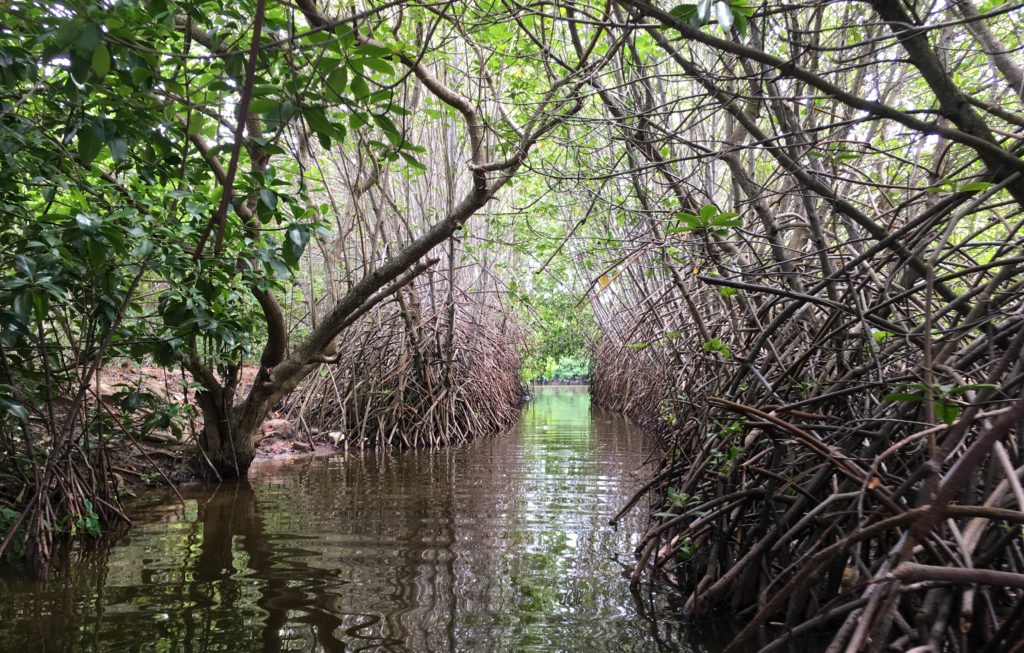
Mangroves for a sustainable future
Protecting and restoring mangrove forests is a broader approach to combating flooding than hard infrastructure development and engineering solutions, such as building dams and dykes. There is no blueprint or one-size-fits-all way of doing it, but the examples show that with community participation, local and scientific knowledge at hand, the appropriate location and a self-sustaining model, this approach can provide a good foundation to build resilience in coastal communities. Wickramasinghe agrees. We [Sudeesa] combine the traditional knowledge of the fishermen with the scientific knowledge of the importance of mangroves,” he says, and incorporate women because they are the real focus group for the protection of mangroves [and] have the influence in their families even over their husbands.”
Involving communities in environmental initiatives to work with rather than against nature helps support and enhance ecosystems, provides a space for inclusive decision-making, and shows that systems are intertwined – one issue cannot be solved in isolation of another. Healthy mangroves can protect communities from flooding while also providing livelihoods and healthy ecosystems with valuable resources.